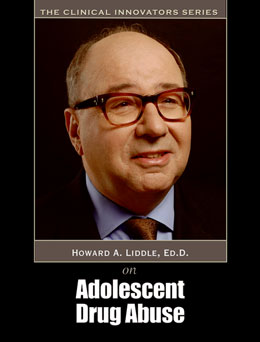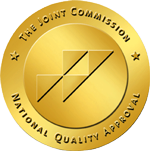Today the exciting field of adolescent substance abuse treatment is one marked by enormous growth and change. Adolescent substance abuse treatment that has emerged from the shadows of adult treatment as a separate, clinically creative field of study where considerable scientific progress has been made in our knowledge about the causes and correlates of adolescent problems. Dr. Liddle discusses the multiple factors that contribute to the development of adolescent substance abuse, its accompanying emotional and behavioral problems, co-occurring disorders and juvenile justice. He also talks about treatment and what makes it work.
He clarifies how today's best practices strive to be comprehensive, involving the teen's parents, family, peers, and other significant individuals in the teen's life. Here, Dr. Liddle focuses on the core ideas and clinical methods of an effective evidence-based, family-based treatment: Multidimensional Family Therapy.

This manual builds on the content of the video. The thirty-five question post-test is worth twenty continuing education hours upon successful completion.
(VIDEO)
In this video, Dr. Howard Liddle, director of the University of Miami Center for Treatment Research on Adolescent Drug Abuse, speaks to the growing body of best practices of adolescent programming in treatment and juvenile justice. In his discussion of best practices in the field Dr. Liddle reviews evidence-based programs and focuses on the core ideas and clinical methods of family-based interventions, especially Multidimensional Family Therapy.
His dynamic presentation, along with vivid graphics, helps viewers understand the complex ideas of new adolescent approaches and define in manageable terms the treatment of teen drug problems. He reviews core concepts, major adolescent research, and clinical practice, including areas of neurobiology, co-occurring disorders, and juvenile justice. His ideas will help you understand
- how to work more effectively with teens' families and environments;
- how to minimize the risks and maximize the protective factors in adolescent lives;
- multidimensional family therapy in systems of care for drug involved adolescents;
- how extensive structural changes that happen in teens' brians after puberty can impact their drug abuse, treatment, and recovery;
- co-occurring disorders as the rule rather than the exception in working with teens.
Read the
introduction and chapter one of
Adolescent Drug Abuse. This file is in PDF format.
*Hazelden is an approved continuing education provider by NAADAC (program #97069), CAADAC (program #OS-04-651-1012), and IAODAPCA (program #8737).
Other topics in the Clinical Innovators Series include:
Treating Co-occurring Disorders by Robert E. Drake, Ph.D.
Brief Intervention by Ken Winters Ph.D.
Methamphetamine: New Knowledge, New Treatments by Richard A. Rawson, Ph.D.
Stages of Change and Addiction by Carlo DiClemente, Ph.D.
Older Adults and Addiction by Federic Blow, Ph.D., & David Oslin, M.D.
Applying ASAM, Criteria by David Mee-Lee, M.D., & Kathyleen Tomlin
Women and Addiction by Stephanie S. Covington, Ph.D.
The Neurobiology of Addiction by Carlton K. Erickson, Ph.D.
Dr. Liddle discusses the multiple factors that contribute to the development of adolescent substance abuse, its accompanying emotional and behavioral problems, focusing on a type of therapy called Multidimensional Family Therapy (MDFT)

 This manual builds on the content of the video. The thirty-five question post-test is worth twenty continuing education hours upon successful completion.
(VIDEO)
In this video, Dr. Howard Liddle, director of the University of Miami Center for Treatment Research on Adolescent Drug Abuse, speaks to the growing body of best practices of adolescent programming in treatment and juvenile justice. In his discussion of best practices in the field Dr. Liddle reviews evidence-based programs and focuses on the core ideas and clinical methods of family-based interventions, especially Multidimensional Family Therapy.
His dynamic presentation, along with vivid graphics, helps viewers understand the complex ideas of new adolescent approaches and define in manageable terms the treatment of teen drug problems. He reviews core concepts, major adolescent research, and clinical practice, including areas of neurobiology, co-occurring disorders, and juvenile justice. His ideas will help you understand
This manual builds on the content of the video. The thirty-five question post-test is worth twenty continuing education hours upon successful completion.
(VIDEO)
In this video, Dr. Howard Liddle, director of the University of Miami Center for Treatment Research on Adolescent Drug Abuse, speaks to the growing body of best practices of adolescent programming in treatment and juvenile justice. In his discussion of best practices in the field Dr. Liddle reviews evidence-based programs and focuses on the core ideas and clinical methods of family-based interventions, especially Multidimensional Family Therapy.
His dynamic presentation, along with vivid graphics, helps viewers understand the complex ideas of new adolescent approaches and define in manageable terms the treatment of teen drug problems. He reviews core concepts, major adolescent research, and clinical practice, including areas of neurobiology, co-occurring disorders, and juvenile justice. His ideas will help you understand
